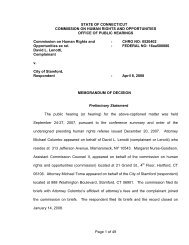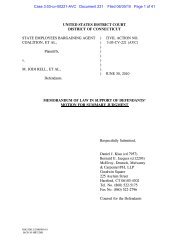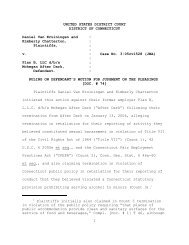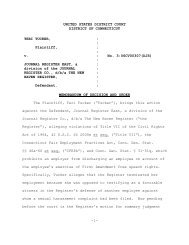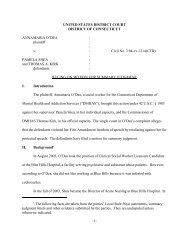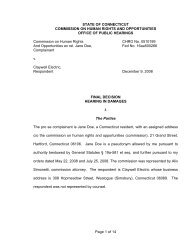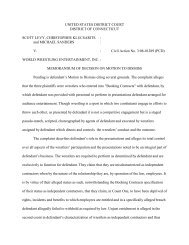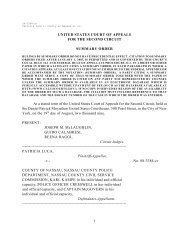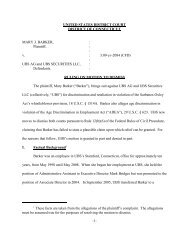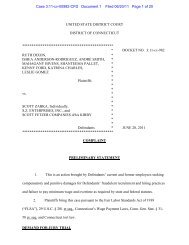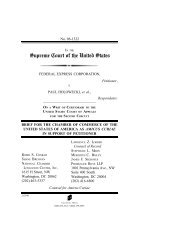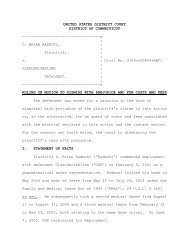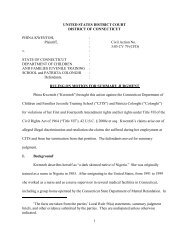Connecticut District Court decision, Goodwine v. DCF
Connecticut District Court decision, Goodwine v. DCF
Connecticut District Court decision, Goodwine v. DCF
You also want an ePaper? Increase the reach of your titles
YUMPU automatically turns print PDFs into web optimized ePapers that Google loves.
Anderson, 477 U.S. at 249-50 (citations omitted).III.The <strong>Court</strong> first addresses Ms. <strong>Goodwine</strong>'s Title VII disparate treatment claim, Title VIIhostile work environment claim, and § 1983 equal protection claim.A.Title VII race- and sex-discrimination claims based on disparate treatment are governedby the familiar burden-shifting framework set forth in McDonnell Douglas Corp. v. Green, 411U.S. 792 (1973). A plaintiff may establish a prima facie case of discrimination by showing that:"1) she is a member of a protected class; 2) she was qualified for her position; 3) she suffered anadverse employment action; and 4) the action occurred under circumstances giving rise to aninference of discrimination." Norville v. Staten Island Univ. Hosp., 196 F.3d 89, 95 (2d Cir.1999). For the fourth element of the prima facie case, "[a] plaintiff relying on disparatetreatment evidence must show she was similarly situated in all material respects to theindividuals with whom she seeks to compare herself." Mandell v. County of Suffolk, 316 F.3d368, 379 (2d Cir. 2003). Although the question of whether two individuals are similarly situatedmay present a factual issue for a jury, "a court can properly grant summary judgment where it isclear that no reasonable jury could find the similarly situated prong met." Cine SK8, Inc. v.Town of Henrietta, 507 F.3d 778, 791 (2d Cir. 2007) (citation omitted).Once the plaintiff makes out a prima facie case, the burden shifts to the defendant toarticulate a legitimate, non-discriminatory rationale for the adverse action. See Norville, 196 F.3dat 95. "The burden is satisfied if the [defendant] articulates a 'clear and specific' reason which, if'taken as true, would permit the conclusion that there was a nondiscriminatory reason for theadverse action.'" Gladwin v. Pozzi, No. 10-748-cv, 2010 WL 5141233, at *3 (2d Cir. Dec. 20,8



